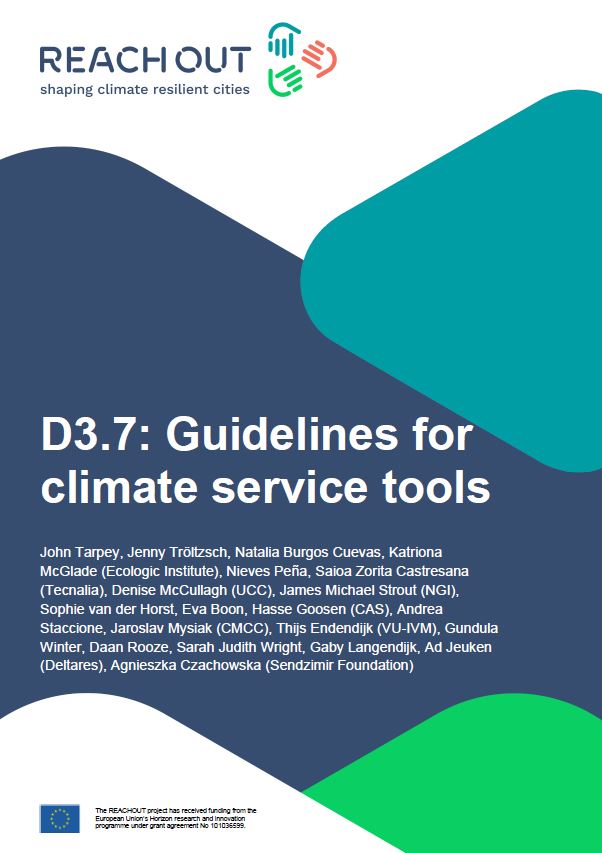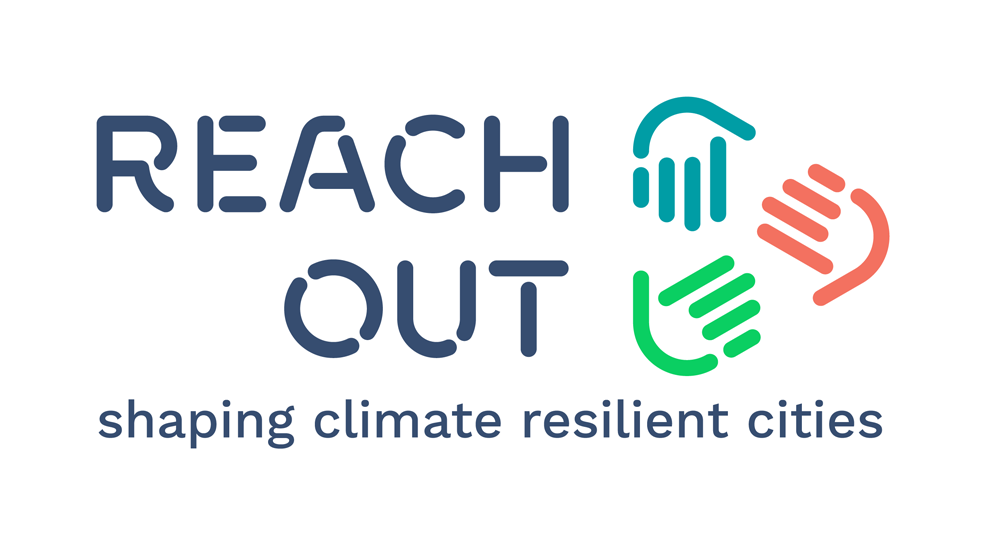Guidelines for Climate Service Tools
- Publication
- Citation
Tarpey, J., McGlade, K.; Tröltzsch, J.; Burgos Cuevas, N.; Peña, N.; Zorita Castresana, S.; McCullagh, D.; Strout, J.M.; van der Horst, S.; Boon, E.; Goosen, H.; Staccione, A.; Mysiak, J.; Endendijk, T.; Winter, G.; Rooze, D.; Wright, S.J.; Langendijk, G.; Czachowska, A. (2025). D3.7 Guidelines for climate service tools. Deliverable of Horizon 2020 project REACHOUT.
As part of the EU-funded REACHOUT project, a comprehensive suite of climate service tools has been developed to support cities in addressing climate adaptation challenges. The newly released Guidelines for Climate Service Tools provide a structured overview of more than 20 technical and soft tools, as well as supporting consultancy services, all integrated into the Triple-A Toolkit – a web-based platform designed to enhance urban climate resilience. The tools address the full policy cycle of adaptation by covering the phases of Analysis, Ambition, and Action, and have been tested and refined through extensive co-creation with seven European City Hubs.
Tailored Instruments for Complex Urban Challenges
The toolkit includes technical tools such as the Pluvial Hazard and Risk Assessment and Adaptation Tool, which identifies flood-prone urban areas, and FloodAdapt, a decision-support system for assessing compound flood scenarios under different future conditions. In addition, tools like the Climate Resilient City Tool (CRCTool) help planners design, compare, and visualize adaptation measures, such as nature-based solutions (NBS) or urban greening strategies. Complementing these technical solutions are soft tools such as the Climate Impact Diagrams and Climate Stories, which promote participatory planning, stakeholder engagement, and awareness raising. Three dedicated consultancy services further facilitate the co-development and mainstreaming of user-driven climate services.
User-Centric Co-Creation and High Adaptability
A distinguishing feature of the REACHOUT tools is their user orientation. Many tools have been developed or adapted through direct interaction with local governments and stakeholders. The tools offer varying levels of complexity and flexibility – from ready-to-use web interfaces to advanced models requiring spatial data processing and scenario simulation capabilities. In many cases, tools can be adapted to local contexts through the integration of local datasets or by leveraging open-source components. This modular approach allows for integration across services – for instance, combining Social Vulnerability Index (SVI) Tool outputs with heatwave data from the Thermal Assessment Tool for enhanced risk assessment.
Tested in European City Hubs: Real-World Application
REACHOUT's tools have been applied in practice in cities including Milan, Logroño, Cork, Athens, Lillestrøm, Gdynia, and Amsterdam. In Milan, a full application of the pluvial flood risk tool was conducted, including analysis of green infrastructure networks. Cork integrated the FloodAdapt tool into its long-term flood risk planning. In Logroño and Gdynia, a crowdsourcing module enabled citizens and students to map local climate hazards, thereby complementing technical assessments with community knowledge. These applications demonstrate the tools’ relevance and usability, and the City Hubs provided essential feedback to refine the tools for broader use.
A Holistic Framework for Climate-Informed Urban Planning
The Guidelines for Climate Service Tools showcase a robust and practice-oriented set of instruments for urban adaptation. The Triple-A framework – which guides users from understanding risks to implementing solutions – serves as the backbone of the toolkit. By going beyond traditional risk-based approaches and promoting opportunity-driven planning, the REACHOUT tools help cities to embed climate services across policy domains. The resulting toolkit not only enables better climate risk management but also supports co-benefit identification, stakeholder empowerment, and strategic decision-making for resilient urban futures.





